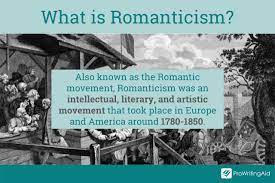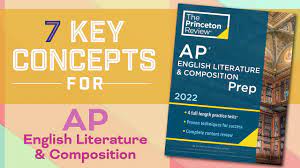Romanticism in Literature: A List of Characteristics
Romanticism in literature is characterized by an exciting tone that often makes the reader feel inspired or excited. This tone can be seen in works such as “Wuthering Heights” and “To Kill a Mockingbird”. It emphasizes feelings of love, passion, and adventure, which is why it is often compared to the Romantic Era itself.
One of the most common characteristics of romanticism in literature is its focus on emotions. Authors often explore the depths of human emotions and how they relate to each other. This can be seen in works such as “Pride and Prejudice” and “The Fault in Our Stars”. These novels focus on how people deal with difficult emotions, sometimes using humor to do so.
Another common characteristic of romanticism in literature is its emphasis on imagination. Authors often use fantastical elements to explore different aspects of life, including the inner world of humans. This can be seen in works such as “Alice’s Adventures In Wonderland” and “The Dark Lord Of The Rings”. These books are full of adventures and suspense, which makes them perfect for those looking for an escape from reality.
reading literature literally makes you a better person youtube
Romanticism is a major literary movement that developed in the 18th century. Characteristics of Romanticism include a focus on emotion, individualism, and imagination. These characteristics can be seen in literature, where authors often use romantic themes to explore human emotions and relationships.
One way Romanticism manifests itself in literature is through the use of symbolism. Symbolism can be used to represent important ideas or concepts in a way that is more meaningful to the reader. For example, one of the most common symbols used in Romantic literature is the rose. The rose has long been associated with love and beauty and therefore can be used as a symbol to explore those themes.

Another way Romanticism manifests itself in literature is through the use of symbolism. Symbolism can be used to represent important ideas or concepts in a way that is more meaningful to the reader. For example, one of the most common symbols used in Romantic literature is the rose. The rose has long been associated with love and beauty and therefore can be used as a symbol to explore those themes.
Another characteristic of Romanticism is its focus on emotion. Many authors use romantic themes to explore human emotions and relationships. This gives readers a chance to connect with the characters and feel their emotions along with them.
Overall, Romanticism is a major literary movement that focuses on emotion, individualism, and imagination. It can be seen in literature through the use of symbolism and the focus on emotion.
Robert Demaria literature youtube
Robert Demarée is an author of Romance and Gothic fiction who has written extensively on the Romantic movement in literature. He has also made several English language video lectures on the Romantic period, which can be found on YouTube. In these videos, he identifies certain Romantic characteristics in various literary works, including those listed below.
1. A focus on emotions: Romantic literature often emphasizes the emotions of its characters more than the rational elements of plot. This allows readers to more easily connect with the characters and feel their emotions, which is essential to Romanticism’s goal of promoting empathy and understanding between people.
2. A focus on nature: Romantic literature often features stories that take place in natural settings, emphasizing the beauty and power of nature. This reinforces the idea that humans are part of a larger, interconnected world and contributes to a sense of spiritual renewal associated with Romanticism.
3. A focus on personal transformation: Many Romantic novels emphasize the individual’s journey toward self-discovery and spiritual growth. This helps to create a sense of solidarity among readers as they follow the protagonist’s trials and tribulations.
4. An emphasis on nostalgia: Many Romantic novels explore the phenomenon of nostalgia, which refers to a longing for a lost era or simpler times. This represents a rejection of progress and industrialization, two key elements of 18th century life.



